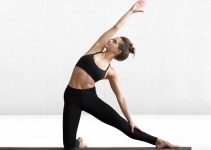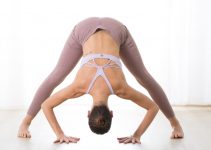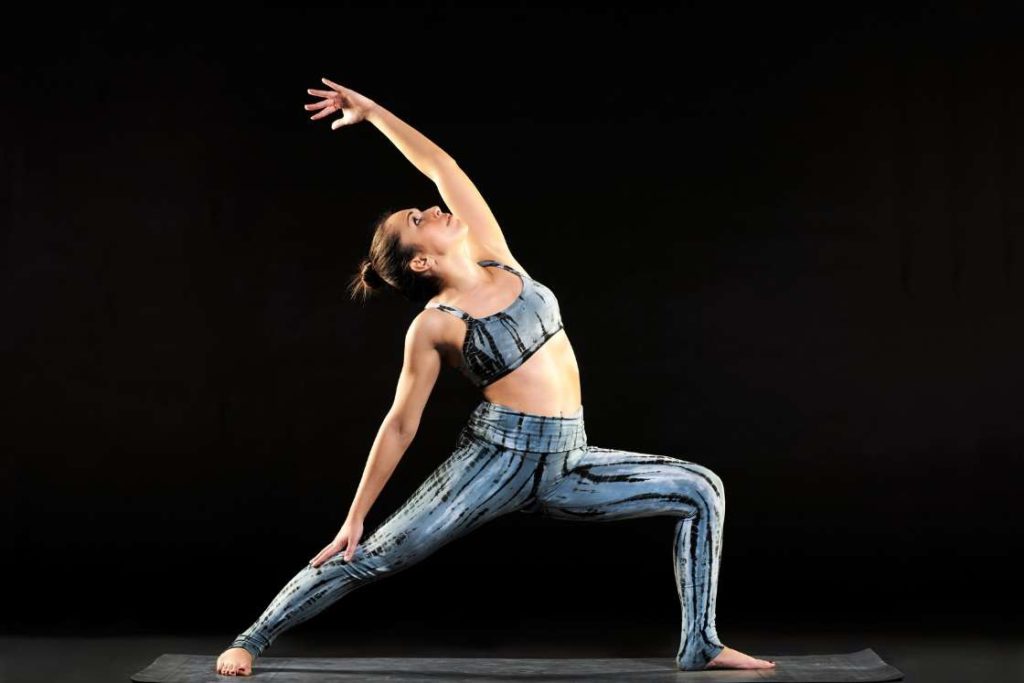
| Sanskrit Pronunciation | Viparita Virabhadrasana (VIP-uh-REE-tuh veer-uh-buh-DRAHS-uh-nuh) |
| Meaning | Viparita = Reverse / Virabhadr = Warrior / asana = pose |
| Pose Type | Standing Back-bend |
| Pose Level | Beginner pose |
| Focused muscles | Hip Flexors, neck, shoulder, knees, thighs, Pelvic Muscles, glutes, hamstring, lower back, |
| Other Names | Urdhva Virabhadrasana, Peaceful Warrior Pose |
Reverse Warrior is a standing backbend pose. It gives a gentle stretch to the side torso muscles.
Just like other warrior series poses (1, 2, 3), in reverse warrior, the legs are kept in a wide lunge position to make a warrior-like stance. This pose is assumed by coming into warrior 2 and then from warrior 2, the front-facing hand is lifted up and back. It gives an opening to the intercostal muscles that run between the ribs and enhance the breathing process.
Viparita Virabhadrasana
Viparita Virabhadrasana is a Sanskrit name of the Reverse Warrior Pose. The name ‘Virabhadra‘ is derived from the fierce incarnation of Hindu Lord Shiva. There is a legendary story goes behind this pose name.
As per the Hindu legend, Daksh (father of Shiva’s wife Parvati) hosted an oblation where his daughter and Shiva (Supreme of all gods) were not invited. To which, Parvati felt humiliated and disrespectful regarding her husband, took a step toward sati (to burn alive in the fire). When Shiva came to know about what had happened, he plucked a lock from his hair and thrashed it on the ground. This, then, gave birth to the Virabhadra and Bhadrakali (wrathful incarnation of Devi or Goddess that grants him the power of destruction). This led to the destruction of the entire kingdom of king Daksha and was beheaded as well due to the Virabhadra’s anger.
Reverse Warrior Pose: Love over Ego
The destruction of King Daksha’s army by the Lord himself in his State of Fearful warrior set up an example for the world. Love knows no boundary and if something like ego ever tries to become the one in between love, it will vanish ultimately.
The unhealthy state of the body is its ‘ego’. The practice of Reverse Virabhadrasana acts as a ‘love’ in restoring ‘health and wellness’ in the practitioners. In this sense, the ultimate aim becomes simplified with every practice that nurtures us in the form of love.
Practice Guide
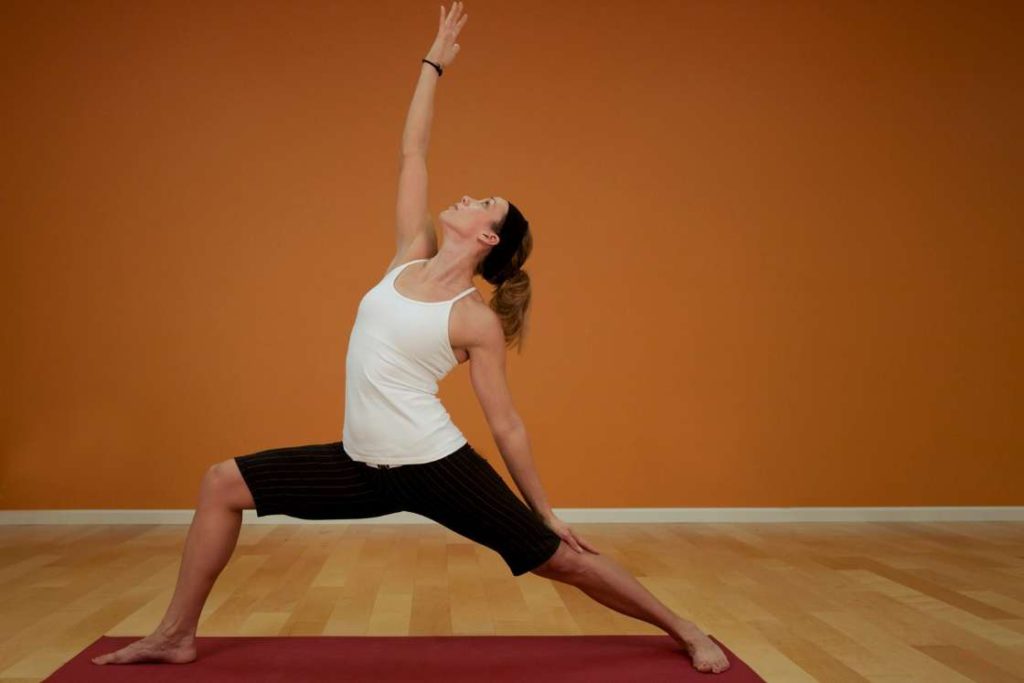
Follow the guide below to safely practice reverse warrior pose.
Contraindications of Reverse Warrior Pose
Women in the final stage of pregnancy should be cautious while practicing or perform reverse warrior pose under an expert yoga teacher. In the condition injury in hip, neck, lower back, knees, and ankle one should refrain from this pose practice. Avoid holding Reverse Virabhadrasana longer in High blood pressure condition and also avoid practice in recent abdominal, knee, ankle, and spinal surgery.
Preparatory Poses
- Utthita Parsvakonasana (Extended Side Angle Pose)
- Virabhadrasana II (Warrior Pose II)
- Parivrtta Janu Sirsasana (Revolved head to knee pose)
How to Do Reverse Warrior Pose (Steps)
- Begin by coming into tadasana. Your hands beside your hips and shoulder relaxed. Feet aligned with them hip-distance apart.
- Now, turn left slightly to place your right foot 3 to 4 feet distance in forwarding direction. Meanwhile, Your left foot should be at a 45-degree angle slightly placed inward with the right foot. This is a warrior-like stance of legs.
- After this, raise your arms up parallel to the floor in a manner your palms facing the floor. Engage your shoulder blades to reach through your finger in a forwarding direction.
- Bend your right knee to set up a 90-degree angle with an exhale. Keep your knee directly over the ankle and shin perpendicular to the floor. From here, drop your hips so that your thighs become parallel to the floor. This is the Warrior 2 position.
- Now, drop your left shoulder to reach the back of the left thigh through your left hand. Then, inhale to lift your right arm up and your fingers extend toward the ceiling side in a manner that your upper right arm touches your right ear.
- Afterward, lengthen up your sides of the waist by keeping the foundation firm and hips dropped. Now, by initiating an inward arch in the spine slide your left hand to reach the left calf.
- Now, tilt your head a bit in a backward direction and gaze to the raised hand. During this, the shoulder relaxed and the chest lifted. This is the final position for the Reverse Warrior Pose.
- Hold here for a few breaths and then return with an inhale to drop your arms down in warrior 2. Now, press through your back foot to straighten your right knee. Come into the neutral position and then lift up the left leg.
- Now, bring down your hand fully beside your hips and return the left foot to the previous position then relax.
Follow Up Poses
Because reverse warrior is a backbend pose, to neutralize any muscles straining after the pose these follow up poses should be practiced.
Precautions
For proper alignment and safe practice, the following precautions should be taken in reverse warrior pose.
- While bending the right knee to form a right angle, practitioners should grasp the floor with their left foot. This will serve as hinge support during shifting the weight on the right foot.
- When reaching the left leg with the left hand. Practitioners should activate their thighs and glutes in order to avoid sudden dropping of the pelvis.
- Avoid loose feet while bending backward in reverse warrior pose. It might result in overextension of the spine and displacement of the feet, ultimately falling backward.
Beginners Tips for Reverse Warrior Pose
Beginners can do reverse warrior pose in following modifications to ease the pose;
- Practitioners with tight hips and hamstrings might face difficulty in leg opening while getting into the reverse warrior pose. So, they can decrease the distance between the front and back foot or may straight up the right knee up to the extent where you are comfortable.
- The appropriate angle of 90 degrees in the knee is needed before you go for a backbend. This can be achieved by deepening the pelvis placement, which requires enough strength in the thighs. So, by ascending the pelvis placement beginners can reduce the pressure from the thighs.
- Stiffened back makes it hard to gain control over the backbend. Therefore, beginners can do this pose before the wall in order to avoid getting far away in the backbend or ultimately falling.
Variations of Reverse Warrior Pose
The two popular variations of reverse warrior pose are twisted reverse and bound reverse warrior pose. Here’s what these looks like;
1. Twisted Reverse Warrior Pose
In twisted reverse warrior pose, while maintaining the basic pose upper body is twisted to the one side and then gently stretched back in a backbend.
To come into twisted reverse warrior pose, from reverse warrior gently shift your weight on the front leg (that is on 90 degree angle). Now with exhalation, slowly start twisting your upper body towards in the direction of front bent leg. In this position, one arm would be raised up in the air (front arm) and left arm will be sliding down to the back hamstring.
1. Bound Reverse Warrior Pose
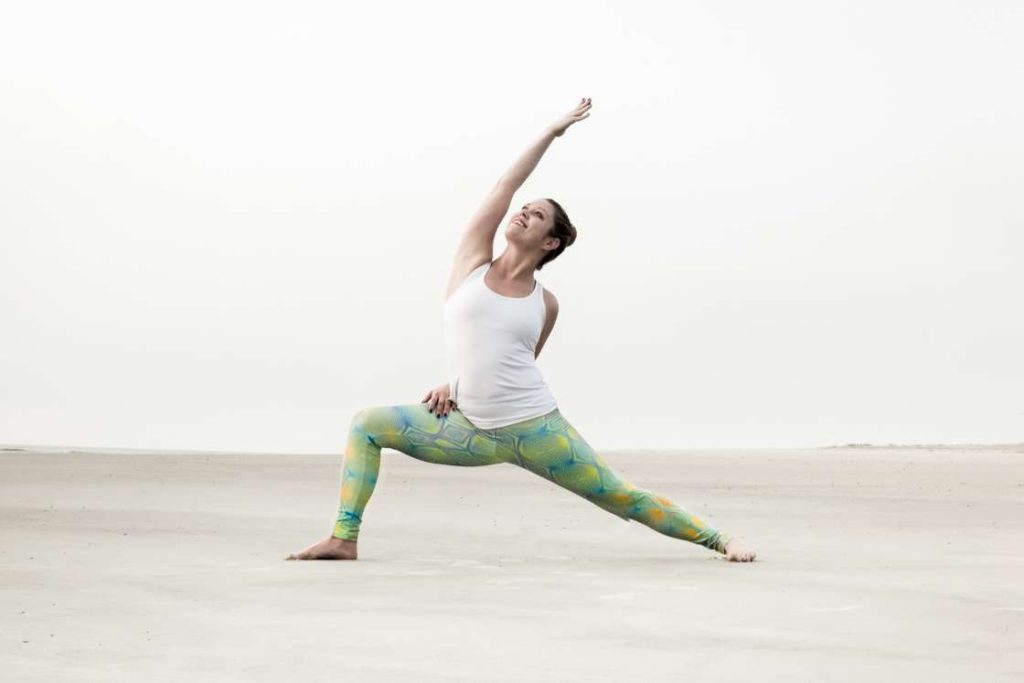
In this variation, the back arm is wrapped behind the back. it’s called bound reverse warrior pose because here the upper body gets bound by the hand placement.
To come into the pose, from the reverse warrior, slide your back arm behind your back, reaching the backhand for the inner of the front thigh. Then bend backward while opening the chest sideward.
Therapeutic Use
- Promote respiration – The back bending in reverse warrior pose stretches intercostal muscles. This free up the tension in between the ribs and opens up the chest. Allowing the lungs to inflate properly with inspired air.
- Reduce prenatal stress – Reverse warrior pose acts as a stress-buster in pregnant women. In a study
Reverse Warrior Pose Benefits
The Reverse Warrior pose is filled with great benefits that leaps the health and wellness to the new level. Following are some them.
1. Improves Spinal and Hip joint Flexibility
The backbend in the Reverse warrior pose stretches the entire back, which helps in realigning the Vertebrae. This in turn stretches the front body and shoulder that helps in the increment of the spine flexibility.
While the hip joint is meant to be more stable and less mobile than the shoulder joint, it can still be extremely limiting and even harmful if the hip joint lacks its full mobility. So, The foot placed apart from each other in Reverse Virabhadrasana stretches hips and enhances their flexibility. This further results in stronger movements.
2. Strengthens Leg Muscles
The pressure bear by the legs while practicing reverse warrior pose strengthens leg muscles. According to one of the studies [efn_note] Effects of an 8-Month Yoga Intervention on Arterial Compliance and Muscle Strength In Premenopausal Women https://www.ncbi.nlm.nih.gov/pmc/articles/PMC3737865/ [/efn_note], regular practice of this asana improves strength in the legs of the normal premenopausal women 35-50 years of age.
3. Activates Throat Chakra and Heart Chakra
Upward chest lifting and tilting of the head in a backward direction affects the subtle energy channels. This practice along with proper alignment and right breathing activates the heart chakra and Throat Chakra. This further affects on a spiritual level, opening the heart chakra fills you with love, forgiveness, and compassion, improves communication, self-expression, and the ability to speak your personal truth.
4. Helps in Lowering Blood Pressure
According to one study [efn_note] Yoga in Arterial Hypertension https://www.ncbi.nlm.nih.gov/pmc/articles/PMC6375068/ [/efn_note], A simultaneous increase in parasympathetic activity and decrease in sympathetic activity has been postulated as an important mechanism of action of the regular practice of the reverse warrior pose. This further regulates the factor concerning the blood pressure and ultimately decreases it.
5. Lowers Back Pain
The reverse warrior pose is one of the best backbends poses for reducing back pain. In support of back muscles, it stretches Quadriceps, Hip flexors, and Gluteus maximus muscles. This holds the surrounding muscles with firmness and invigorates the back muscles. In this manner, it acts as a therapeutic aid in Lower back pain.
6. Reduces Stress and Anxiety
Muscular rigidity is often triggered by stress, which adversely affects the body, nervous system, and its functioning. This in turn makes the nervous system put pressure on the blood vessels, which results in reduced blood flow to the muscles. However, the practice of the Reverse warrior pose makes muscles flexible, which reduces stress and relaxes the body.
Conclusion
The Reverse warrior pose is one of the sequences poses of the warrior series. This is an effective posture for the upper body opening and improving flexibility of the spine and pelvis region.
It can be regular practiced to uplift the mental, physical and spiritual aspects of the body as well.
